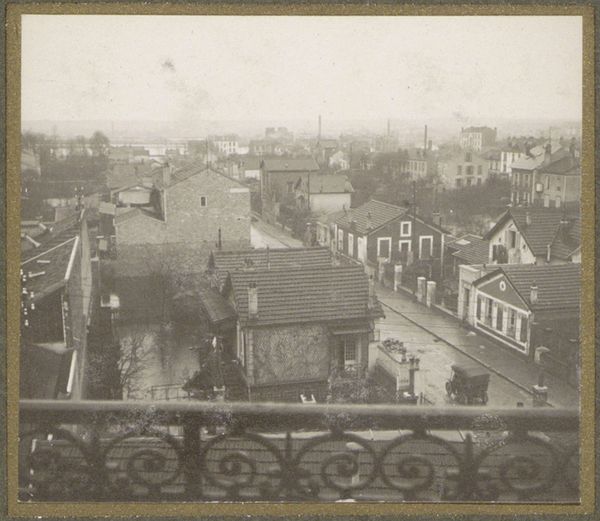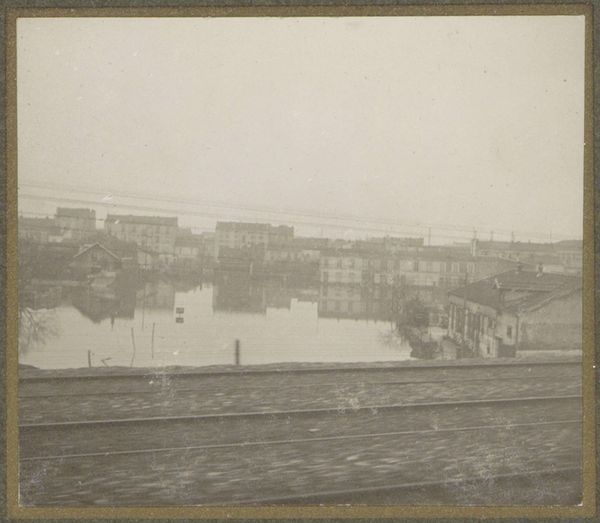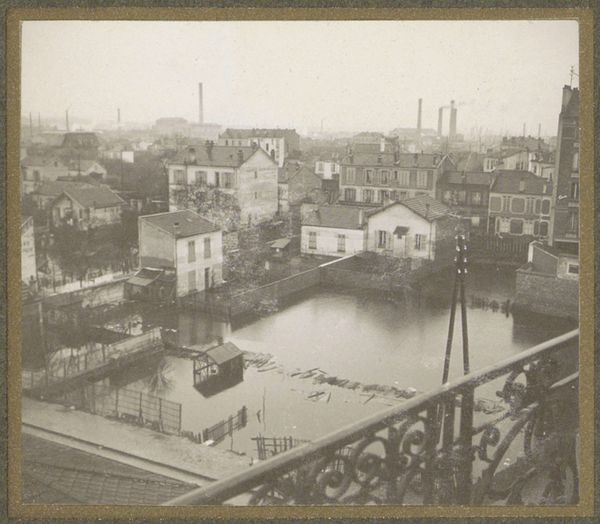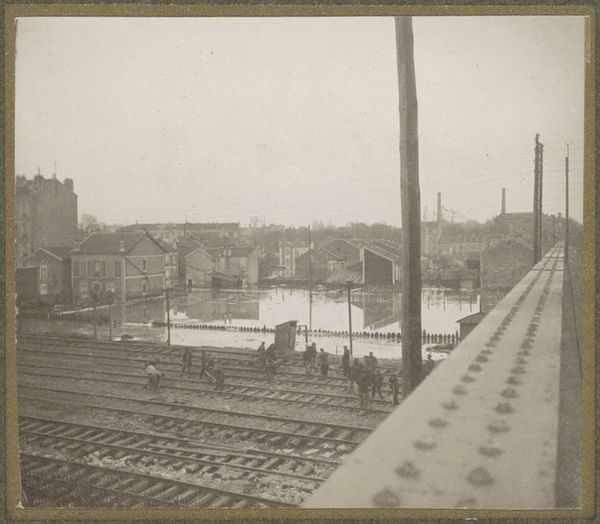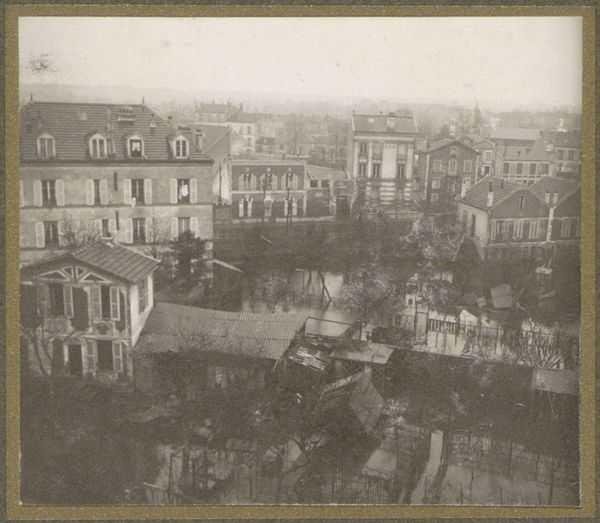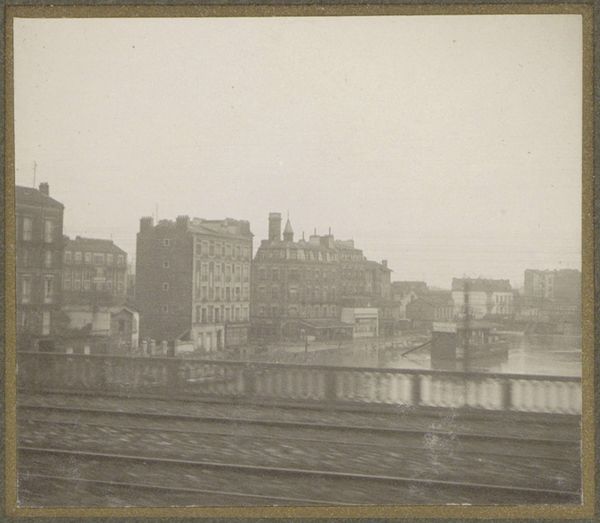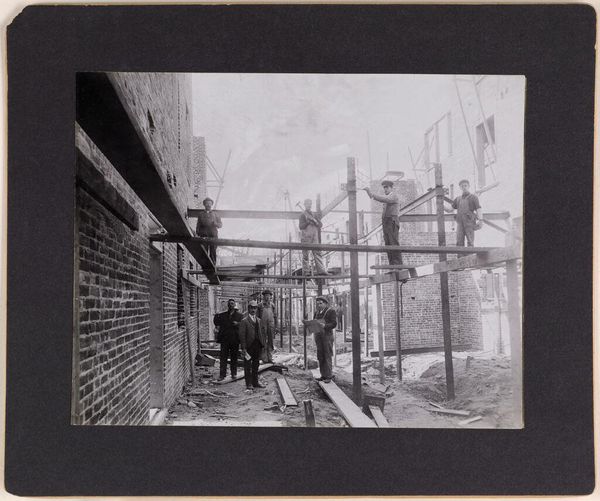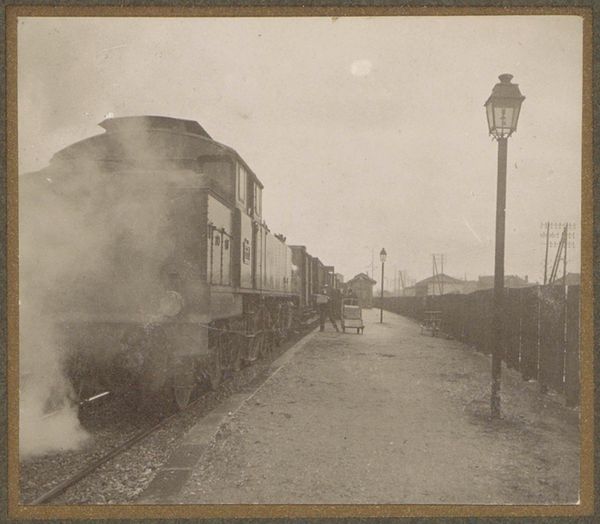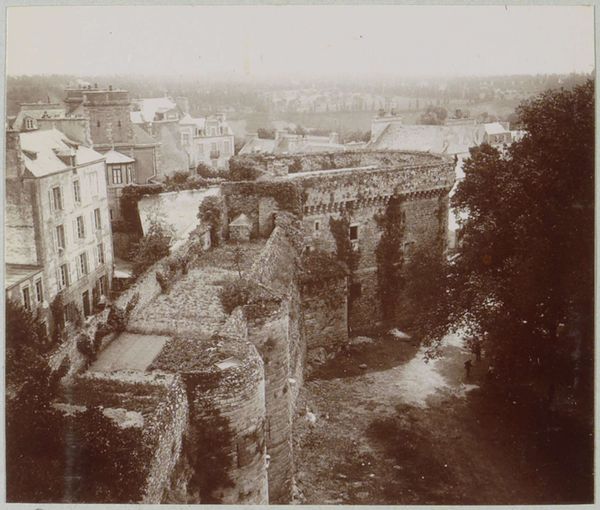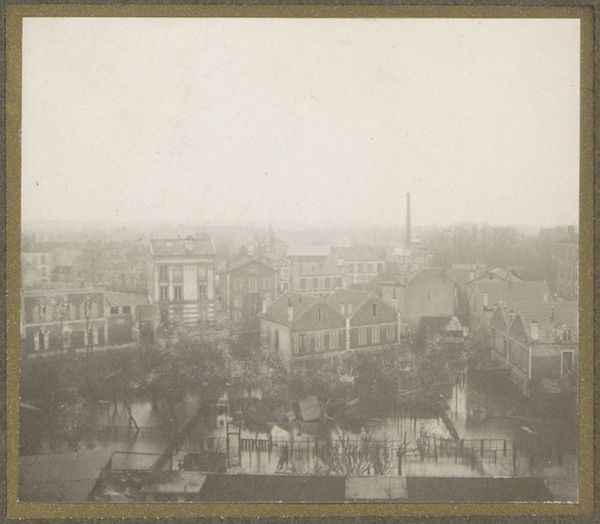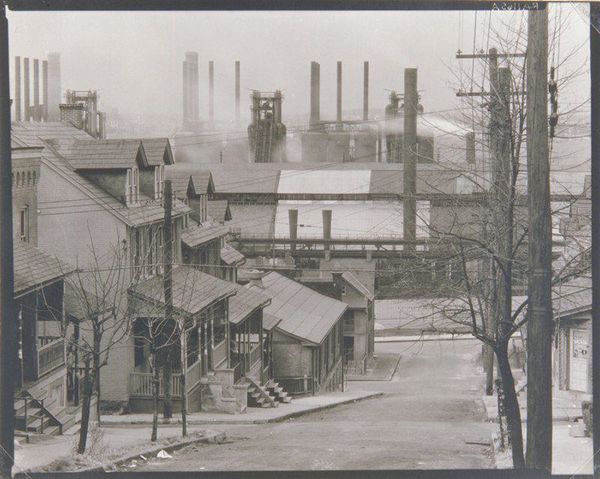
#
yellowing
#
aged paper
#
yellowing background
#
photo restoration
#
parchment
#
historical photography
#
old-timey
#
19th century
#
historical font
#
columned text
Dimensions: height 52 mm, width 59 mm
Copyright: Rijks Museum: Open Domain
Editor: This is a photograph from around 1910, titled "Ondergelopen buitenwijk van Parijs gezien vanuit een venster," so, "Flooded Suburb of Paris Seen from a Window" by G. Dangereux. The hazy, almost dreamlike quality it possesses is captivating; you can sense a recent flood. What stands out to you about this image? Curator: The photograph certainly captures a moment of disruption, but beyond the literal flooding, what submerged symbolic realities are we seeing here? The elevated perspective, looking down on the flooded streets, could represent a sense of detachment or perhaps a yearning for higher ground, spiritually and culturally. Editor: I hadn't considered the height as symbolic, more as practical—finding a dry spot. But I see your point. The water could symbolize chaos or the cleansing of the old. Curator: Exactly. Water often represents both destruction and renewal. Consider the placement of buildings - their solidity versus the fluidity of the water. What psychological tensions are being explored? Is it about modernity encroaching on the natural world or vice versa? The photograph, viewed through this lens, reveals a dialogue of forces that underpin society itself. Editor: So you're saying the photo becomes less about the event and more about deeper cultural anxieties. The rooftops, the chimneys all become part of a bigger symbolic picture? Curator: Precisely. Dangereux, through the captured moment, asks us to consider how societal progress impacts cultural memory and, in turn, our collective psyche. Editor: This has opened my eyes to the deeper layers beneath this seemingly simple photograph. It is so much more complex than just a flood! Curator: Indeed! It’s a testament to the enduring power of imagery to unlock hidden meanings and resonate across generations.
Comments
No comments
Be the first to comment and join the conversation on the ultimate creative platform.
